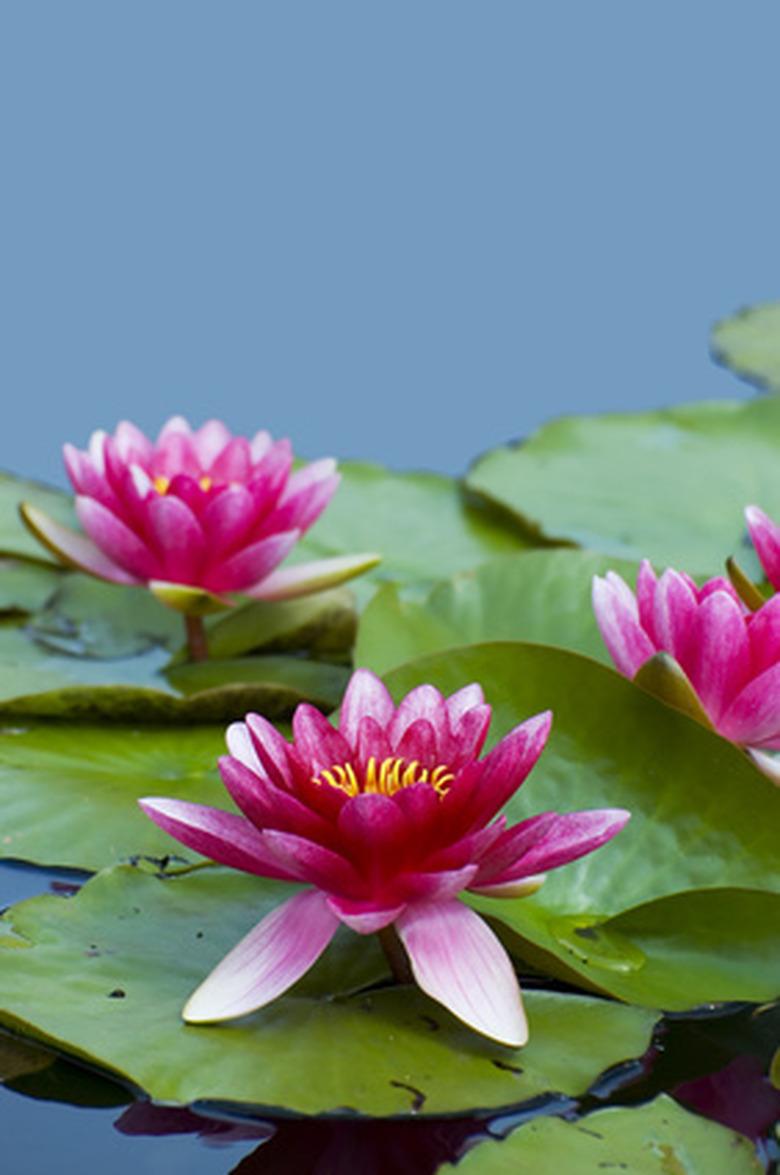Plant Parts Of The Water Lily
Waterlilies (Nymphaea spp.) grow in freshwater habitats around the world, in both tropical and temperate climates. Gardeners use them to bring leaf and flower color to ornamental ponds and they grow well in bottom muck or in soil in containers submerged below the water's surface. Waterlilies are perennial, meaning they return year after year since they regrow leaves and flowers from their rhizomes when water temperatures are warm enough.
Roots
Waterlilies either grow from rhizomes or tubers that grow stolons, depending on species, according to the "A-Z Encyclopedia of Garden Plants." Rhizomes are horizontal, fleshy stems that grow on the soil surface or just below. A tuber is a swollen root or stem that stores starches and other plant products. The stolon that grows from these storage tubers is a sprawling stem that roots and sprouts a new plant at its tip. Perry D. Slocum, author of "Waterlilies and Lotuses," writes that most tropical waterlilies develop rhizomes that grow upright while hardy waterlilies often have horizontal rhizomes. Slender roots extend from these rhizomes to anchor the plant in the mucky topsoil layers and to absorb nutrients.
Shoots
From the growing tip or multiple branch tips on waterlily rhizomes emerge leaves and stems (petioles), collectively called shoots. These shoots elongate and grow upward toward the sunlight at the water's surface. The stems are hollow and filled with gases to help get the unfurling leaf up to the surface. Once there, the thin, flat leaf absorbs sunlight to make food and nourish the rhizome far below. Waterlily leaves are round to oval lobes and are green, sometimes mottled with red or burgundy pigments or with rippled or toothed edges. Often there's a cut on the back side of the leaf, called a sinus. Some tropical waterlilies create miniature plantlets on their floating leaves in the sinus. Flower bud shoots also emerge from the rhizome underwater and elongate on stems to reach the water's surface before opening.
Flowers
Slocum notes that all "hardy" or temperate-zone waterlilies open their flowers during the day, while tropical species open either in the day or across the night. A waterlily flower has numerous petals that open to reveal the male sex organs (stamens) that surround the central female organ (pistil) that contains one or more ovaries. Most tropical waterlilies hold their flowers high above the water, while hardy types float theirs mainly right on the calm water surface. Once the flower ripens and forever closes, it sinks into the water to ripen its seeds. Afterward, the seeds are shed and travel in the water to rest in muck below to germinate.
References
- "A-Z Encyclopedia of Garden Plants"; Christopher Brickell and H. Marc Cathey, eds.; 2004
- "Waterlilies and Lotuses"; Perry D. Slocum; 2005
